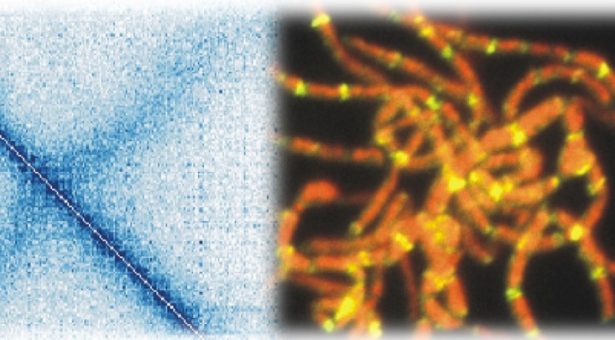
Streptomycetes are the richest source of antibiotics, anticancer agents and immunosuppressants used in human and veterinary medicine.
The production of these important bioactive molecules is often intimately linked with the life cycle of this versatile genus of bacteria.
Unique among bacteria, Streptomyces has a very complex life cycle, and a linear chromosome instead of the usual circular chromosome found in most bacterial species.
How this unusual linear chromosome is folded in three-dimensional space, and how folding might change during the life cycle of Streptomyces is not fully understood. To better understand the folding of the Streptomyces chromosome, researchers at the University of Wrocław (Poland) collaborated with the John Innes Centre.
The groups of Dr Marcin Szafran and Professor Dagmara Jakimowicz at the University of Wrocław, with Dr Tung Le, Group Leader, and Dr Kim Findlay, Head of the Bioimaging platform at the John Innes Centre has led to a breakthrough in understanding how Streptomyces chromosomes fold which is published in Nature Communications.
Dr Marcin Szafran and the team employed Hi-C technique (short for chromosome conformation capture with deep sequencing) to show that the arms of the Streptomyces venezuelae chromosome are separated from each other when the bacterium is in the early stage of its life cycle.
Upon sporulation, when spores are produced, chromosome arms are brought close together and the chromosomes become progressively more compacted. This is achieved by the action of a chromosome segregation protein ParB and a chromosome condensing protein SMC.
The research also showed that the ends of the linear chromosome are organised into distinct domains by a unique Streptomyces protein called HupS.
Dr Tung Le said "This has been a fantastic collaboration, spearheaded by the Jakimowicz group, that reveals a key aspect of Streptomyces cell biology and development. It has been a pleasure to host Dr Marcin Szafran at the John Innes Centre to transfer the Hi-C technique to him."
"It is exciting to see substantial changes in the folding of the chromosomes during the Streptomyces life cycle, from being open to becoming more closed and compacted in preparation for cell division. This is the norm in eukaryotes such as yeast, human, and plant cells but has not been demonstrated in other bacteria apart from Streptomyces."
This work is preceded by a long history of Streptomyces research at the John Innes Centre and with collaborators around the globe.
Three decades ago Professor Carton Chen's group of the National Yang-Ming University in Taiwan, and Sir David Hopwood's group at the John Innes Institute showed that the chromosome of Streptomyces lividans is linear. It is now clear that this is also true for most Streptomyces species.
- 'Spatial rearrangement of the Streptomyces venezuelae linear chromosome during sporogenic development' is published in Nature Communications.






